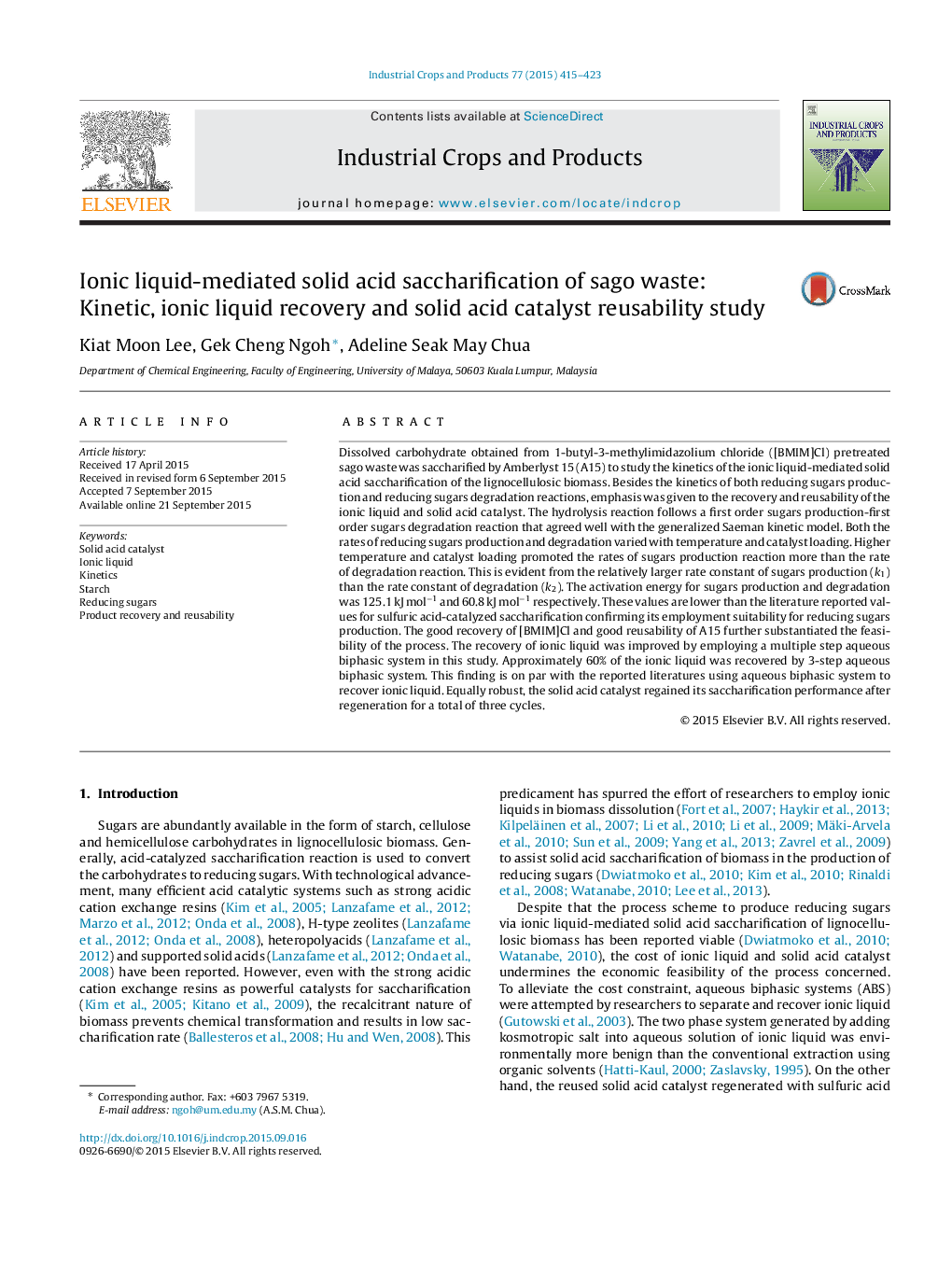| کد مقاله | کد نشریه | سال انتشار | مقاله انگلیسی | نسخه تمام متن |
|---|---|---|---|---|
| 4512689 | 1624833 | 2015 | 9 صفحه PDF | دانلود رایگان |
• Ionic liquid mediated-solid acid saccharification of sago waste is a first order sugars production-first order sugars degradation reaction.
• Sugars production is more favorable compared to sugars degradation reaction.
• Sugars production and degradation rates increase with temperature and acid concentration.
• This process is economical feasible with good recovery and reusability of ionic liquid and solid acid catalyst.
Dissolved carbohydrate obtained from 1-butyl-3-methylimidazolium chloride ([BMIM]Cl) pretreated sago waste was saccharified by Amberlyst 15 (A15) to study the kinetics of the ionic liquid-mediated solid acid saccharification of the lignocellulosic biomass. Besides the kinetics of both reducing sugars production and reducing sugars degradation reactions, emphasis was given to the recovery and reusability of the ionic liquid and solid acid catalyst. The hydrolysis reaction follows a first order sugars production-first order sugars degradation reaction that agreed well with the generalized Saeman kinetic model. Both the rates of reducing sugars production and degradation varied with temperature and catalyst loading. Higher temperature and catalyst loading promoted the rates of sugars production reaction more than the rate of degradation reaction. This is evident from the relatively larger rate constant of sugars production (k1) than the rate constant of degradation (k2). The activation energy for sugars production and degradation was 125.1 kJ mol−1 and 60.8 kJ mol−1 respectively. These values are lower than the literature reported values for sulfuric acid-catalyzed saccharification confirming its employment suitability for reducing sugars production. The good recovery of [BMIM]Cl and good reusability of A15 further substantiated the feasibility of the process. The recovery of ionic liquid was improved by employing a multiple step aqueous biphasic system in this study. Approximately 60% of the ionic liquid was recovered by 3-step aqueous biphasic system. This finding is on par with the reported literatures using aqueous biphasic system to recover ionic liquid. Equally robust, the solid acid catalyst regained its saccharification performance after regeneration for a total of three cycles.
Journal: Industrial Crops and Products - Volume 77, 23 December 2015, Pages 415–423
